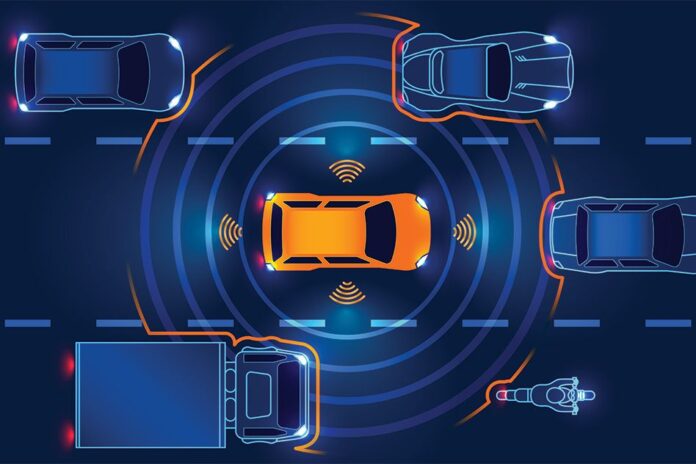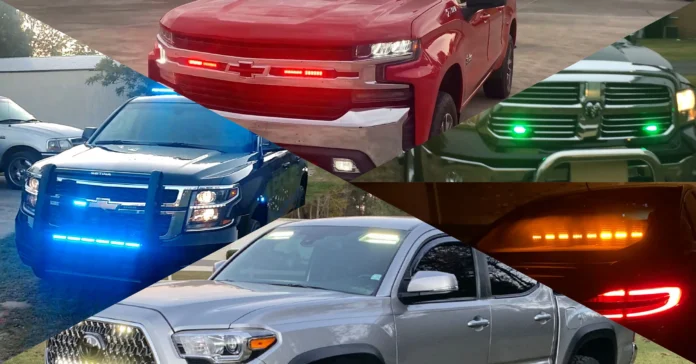Emergency vehicle lights serve a critical purpose – to warn others of potential danger and the need to yield. These flashing lights on ambulances, police cars, fire trucks and other emergency response vehicles are designed to be highly visible to prevent collisions. As drivers, we have a duty to be alert and responsive when emergency lights are activated, both to avoid accidents and allow emergency personnel to fulfill their vital missions.
In this article, we will explore six key ways that emergency lights help avert accidents before they occur. Understanding these purposes can make us all more cognizant drivers who know how to properly react when those lights start flashing behind or ahead of us.
Alerting Other Drivers of an Emergency Vehicle’s Presence

The most basic function of emergency lights is to announce the vehicle’s presence. The bright, flashing lights are hard for other drivers to miss. This gives motorists critical extra time to spot the emergency vehicle, process that it is responding to an incident, and prepare to move out of its way. The lights are designed to be visible even in low-light conditions or from long distances away to maximize driver awareness. The earlier drivers notice the emergency lights, the more time they have to react appropriately.
The flashing lights send an unambiguous signal to give the emergency vehicle the right-of-way. This prevents accidents that could otherwise occur from a driver failing to notice and yield to an approaching responder. The emergency lights warn “I’m here, see me!” to help drivers become aware of the vehicle and react appropriately.
Indicating the Emergency Vehicle’s Actions and Intent
Emergency vehicle lights also provide clues about what the vehicle is about to do. For example, flashing side lights can indicate the vehicle is about to change lanes or make a turn. Rear flashers warn that the vehicle is stopping suddenly. The lights essentially say “I’m doing this, be ready.”
Understanding what different light patterns signify helps drivers anticipate and accommodate the vehicle’s next moves. This prevents collisions from misjudging or being caught off guard by an emergency vehicle’s maneuvers. Recognizing the signals the lights provide makes motorists more informed and cautious.
Creating Contrast to Improve Visibility

Emergency lights are designed to sharply contrast with the surroundings. This makes them as noticeable as possible. The bright flashes stand out against darker conditions like night, fog, or rain where visibility is lower. Reflective strips on the lights also help reflect headlights back towards other drivers.
This clear contrast enables motorists to spot emergency vehicles much faster than they would otherwise. Those critical extra seconds of visibility give drivers more time to identify the emergency vehicle and take evasive action. It ultimately serves to prevent many T-bone collisions and other accidents resulting from poor visibility.
Grabbing Attention with Urgency
The eye-catching flashing lights also create a sense of urgency. The lights send the clear message that an emergency is unfolding and the vehicle must get somewhere quickly. This triggers an instinctual response in most drivers to pay close attention and get out of the way.
By compelling drivers to focus on the emergency vehicle, the sense of urgency promotes quicker reaction times to pull to the side. It also deters distracted or drowsy drivers from remaining fixated elsewhere. The urgency the lights evoke is key for preventing delayed responses that can lead to collisions.
Activating a Buffer Zone Around the Vehicle

As drivers notice and react to emergency lights, it establishes an impromptu buffer zone around the emergency vehicle. Other vehicles brake, change lanes, or pull over to create open space so the responder can pass through. This lights-activated buffer zone gives emergency vehicles room to maneuver unimpeded.
Without this buffer zone, emergency vehicles would have much greater difficulty weaving through dense traffic responding to emergencies. The zone the lights activate is essential for emergency crews to reach those in need quickly and safely. Proper driver response expands the zone to help prevent accidents.
Improving Safety for Emergency Responders and Civilians
Most critically, emergency lights prevent accidents to protect both emergency responders and civilians. For emergency personnel, fewer collisions means fewer injuries or deaths in the line of duty. They can provide urgent medical care, rescue services, or law enforcement without undue risk.
For civilians, yielding to emergency lights helps ensure faster response to their own emergencies. If an ambulance gets into a crash on the way, it endangers the EMTs and delays critical treatment to those relying on them. Responding appropriately to emergency lights is about keeping all people safe.
As drivers, we play an indispensable role along with emergency responders. Our reaction time, focus, and willingness to yield the right-of-way can mean the difference between a clear path and a dangerous collision. Lives often depend on simple actions like pulling over and slowing down.
Next time you see emergency lights, allow their urgency to spur an immediate, thoughtful response. Give the emergency vehicle plenty of room rather than rubbernecking. Avoid sudden braking or swerving which could cause other accidents. Come to a controlled stop if you need to yield. These small actions prevent bigger tragedies and pave the way for emergency crews to act quickly.
Our streets are shared spaces. Letting emergency lights guide us creates order from chaos when seconds matter most. Drivers who understand the importance of these flashing warnings help emergency responders fulfill their highest purpose – saving lives. So stay alert for those lights, and know your reaction has impact.









